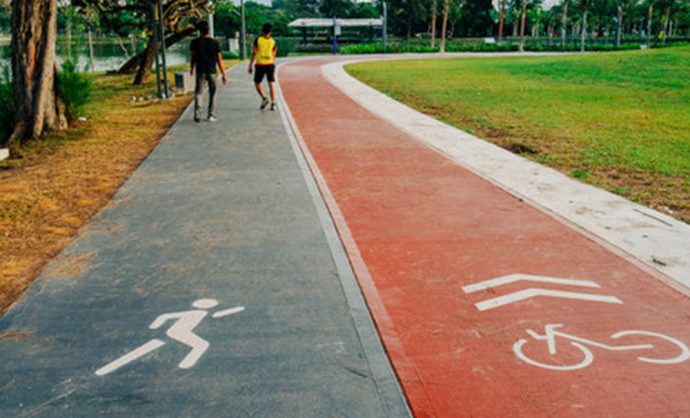Choosing the Right Surface Material for Your Cycle Track: A Comparative Analysis

As cycling gains popularity as a preferred mode of transportation and recreation, the demand for well-designed and durable cycle tracks continues to rise. One of the critical decisions in cycle track construction is selecting the appropriate surface material. Each material option comes with its own set of benefits and considerations, making it essential to conduct a comparative analysis to make an informed choice. In this article, we’ll explore different surface materials commonly used in cycle track construction and provide insights to help you choose the right one for your project.
- Asphalt:
- Pros:
- Smooth surface ideal for high-speed cycling.
- Cost-effective option for large-scale projects.
- Can be easily repaired and resurfaced.
- Cons:
- Susceptible to cracking and potholes over time, requiring frequent maintenance.
- Limited aesthetic appeal compared to other materials.
- May become slippery when wet, increasing accident risks.
- Pros:
- Concrete:
- Pros:
- Extremely durable and long-lasting.
- Minimal maintenance requirements compared to asphalt.
- Can be colored or stamped for decorative purposes.
- Cons:
- Initial installation costs tend to be higher than asphalt.
- Prone to cracking, especially in areas with temperature fluctuations.
- Surface may become rough over time, leading to discomfort for cyclists.
- Pros:
- Composite Materials:
- Pros:
- Versatile material offering a balance of durability and flexibility.
- Excellent shock absorption properties, enhancing rider comfort and safety.
- Resistant to weathering, UV radiation, and chemical corrosion.
- Cons:
- Higher initial cost compared to traditional materials.
- Limited availability of composite material options in some regions.
- Requires specialized installation techniques and equipment.
- Pros:
- Rubberized Surfaces:
- Pros:
- Provides superior traction and skid resistance.
- Offers excellent shock absorption, reducing impact on joints and muscles.
- Environmentally friendly option made from recycled materials.
- Cons:
- Can be costly to install, especially for large-scale projects.
- May degrade over time due to exposure to UV rays and harsh weather conditions.
- Limited color and texture options compared to other materials.
- Pros:
Conclusion: Selecting the right surface material is crucial for the success and longevity of your cycle track project. Consider factors such as durability, maintenance requirements, cost-effectiveness, and rider comfort when making your decision. At PFS Sport, we offer a wide range of surface materials tailored to meet your specific needs and preferences. Contact us today to learn more about our cycle track solutions and let us help you create a safe and enjoyable riding experience for cyclists of all levels.
Recent Posts
- Become a PFS Sport Distributor in the USA: Join the Leaders in Sports Surface Solutions
- Become a PFS Sport Distributor: Join the Leaders in Sports Surface Solutions
- EPDM Granules for Every Application: PFS Sport’s Versatile Solutions
- The PFS Sport Advantage: Competitive Pricing and Exceptional Service
- Global Reach, Local Touch: PFS Sport’s Worldwide Distribution Network








